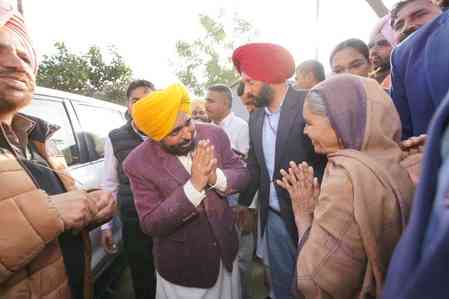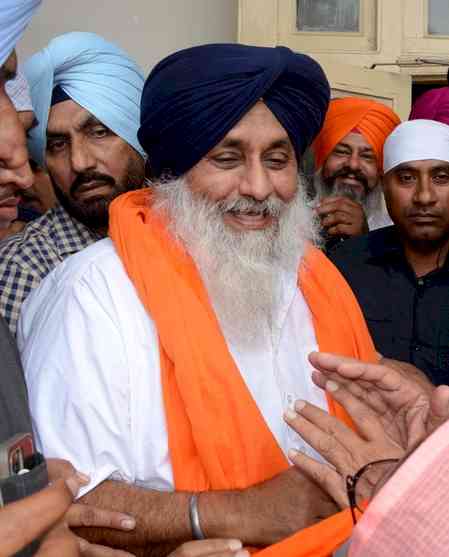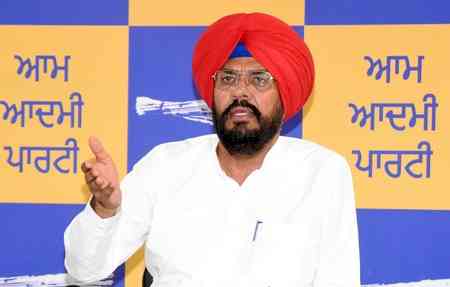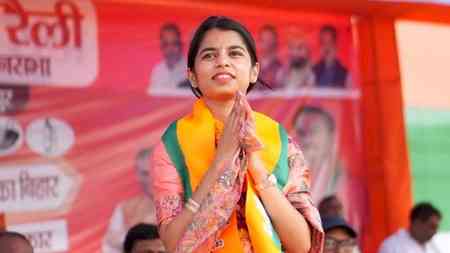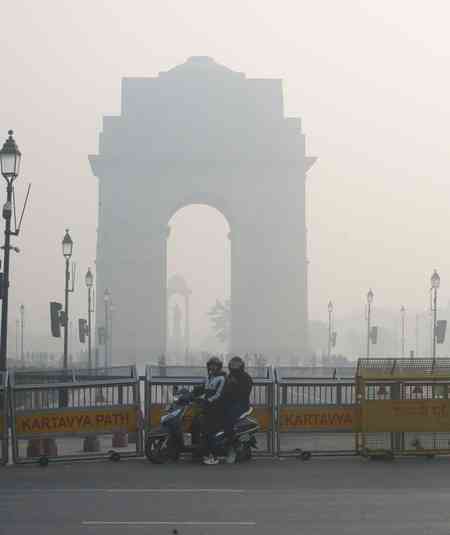Government’s Thoughtful Action - Flood-Affected Animals Also Got Relief
The disaster that came to Punjab showed mercy to no one, neither to humans nor to their dreams, and not even to the voiceless ones. This flood intended to wash away everyone, including those innocent beings who had no voice to ask for help. But in this unprecedented flood, which submerged more than 1,400 villages and affected 3.5 lakh people, an extraordinary chapter of kindness and compassion emerged, where the Mann government and countless brave people risked their lives to save the voiceless ones and became a ray of hope in the darkness.

Chandigarh, September 7, 2025: The disaster that came to Punjab showed mercy to no one, neither to humans nor to their dreams, and not even to the voiceless ones. This flood intended to wash away everyone, including those innocent beings who had no voice to ask for help. But in this unprecedented flood, which submerged more than 1,400 villages and affected 3.5 lakh people, an extraordinary chapter of kindness and compassion emerged, where the Mann government and countless brave people risked their lives to save the voiceless ones and became a ray of hope in the darkness.
At the end of August 2025, when the Sutlej and Beas rivers unleashed their fury across Punjab, more than 15 lakh animals were trapped in rising waters. Their helpless voices were echoing in the submerged villages. Animal Husbandry, Dairy Development and Fisheries Minister S. Gurmeet Singh Khuddian told that during this crisis, 481 veterinary teams were deployed in the field, with each team having 4 members - one veterinary officer, veterinary inspector/pharmacist, and one fourth-grade employee.
Gurchan Singh, a dairy farmer from village Pamma in Pathankot district, tells how he saw his 12 buffaloes standing in muddy water. He says, “I thought I had lost everything, but then I saw boats coming not only for us humans, but also for my animals.” There are thousands of such stories in which approximately 22,534 animals were treated and their lives were saved.
Chief Minister Bhagwant Mann, despite his own health problems during the crisis, handled everything with such intensity and gave clear instructions: “No living being, whether human or animal, will be left behind.” This instruction turned the flood response into a comprehensive life-saving mission. Cabinet Minister Hardeep Singh Mundian ensured that veterinary teams go to villages for animal welfare. In Fazilka alone, his ministry distributed 5,000 bags of animal feed along with human rations.
Organizations like Kalgidhar Trust reached more than 5,000 people in 125 villages and distributed fodder for their animals. Cabinet Minister Khuddian told that the department has distributed 12,170 quintals of feed and 5,090.35 quintals of green fodder and dry fodder in the affected districts. Every possible effort was made to boost the immunity system of animals.
Speaking of numbers, more than 5,16,000 animals were saved. The Mann government and every worker of Aam Aadmi Party used modern technology and every possible effort so that the needs of voiceless ones trapped in floods were also fulfilled. Drones detected animals trapped on rooftops, boats reached every cattle shed through narrow village lanes and many animals were taken to safe places.
In Fazilka, among 38 medical teams, Aam Aadmi Party leader Dr. Amarjeet Kaur tells: “We found a cow who was protecting her newborn calf even after being trapped for three days. When we lifted both of them into our boat, I saw tears in the eyes of our team members, then I felt that we all are doing very good work.”
Speaking of this disaster, it caused a lot of damage. Minister Khuddian told that in 14 districts including Pathankot, Gurdaspur, Amritsar, Ferozepur, Fazilka, Kapurthala, Barnala, Bathinda, Hoshiarpur, Tarn Taran, Patiala, Jalandhar, Roopnagar and Moga, 504 cattle/buffaloes, 73 sheep and goats, and 160 pigs died. Additionally, 18,304 poultry birds died in Gurdaspur, Roopnagar and Fazilka due to the collapse of poultry sheds. About 2.52 lakh animals and 5,88,685 poultry birds were affected by the flood.
But the government did not abandon anyone and they say they will not abandon in the future either. And in this situation, many works were done such as special drainage systems helped dry more than 1,000 acres of waterlogged land, creating safe places for rescued animals. Principal Secretary Animal Husbandry Shri Rahul Bhandari told that the department has released a total of Rs 31.50 lakh for the treatment of flood-affected animals. He instructed officials to ensure immediate response to crisis calls, provide timely medical care to affected animals, and coordinate with district administration and social organizations for effective relief work.
The distribution of animal feed along with human rations in the third phase of relief work by Rural Development Minister Tarunpreet Singh Sond reflects the government’s philosophy that considers all living beings as family. The 28 veterinary teams deployed in affected districts were not only treating animal diseases but were also healing the hearts of those farmers who had seen their lifetime’s hard work flowing away. 24x7 control rooms have been established at both state headquarters (contact number 0172-5086064) and district level offices.
The 2025 Punjab floods will not be remembered only as a natural disaster, but as a decisive moment when the Bhagwant Mann government and the people of Punjab proved that true leadership means protecting every heartbeat, whether human or animal. In our most difficult days, Punjab showed that there is no limit to our capacity for love. And when we extend the circle of our compassion to all living beings, we don’t just save animals, we save our own humanity.


 City Air News
City Air News 
